How to fix Windows 11 black screen issue

Experiencing black screens on your Windows 11 device could alarm you, especially since the absence of an error message leaves you clueless about the exact origin of the problem. Different reasons could cause this, but it also means you have a selection of solutions to try.
The black screen can appear randomly, depending on the root cause of the problem. You might experience this on different occasions, including before your sign-in, during updates, or even while using a program. Despite this, the display appears to be running and turned on, with the cursor still capable of hovering on the black screen.
In this case, you must first check for hardware issues and incompatibilities. It is an essential step you need to observe before troubleshooting your system, as there is a chance the black screen might only be occurring due to a broken cable or something simpler. Nonetheless, a black screen issue due to hardware problems isn’t limited to cables.
That said, try to check the following hardware-related solutions.
Hardware-related fixes
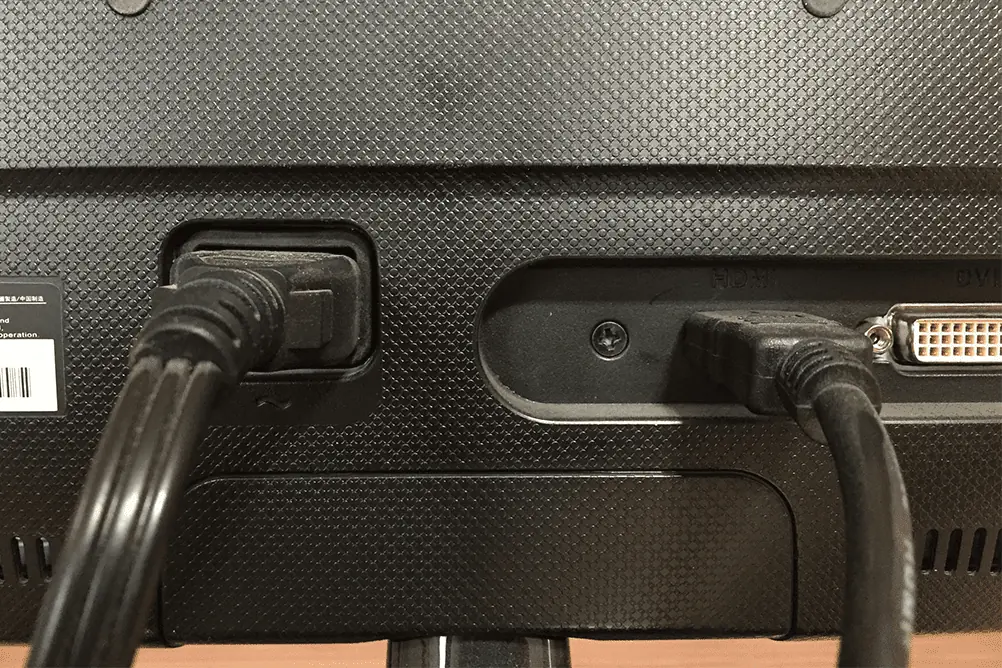
Check connection. If the black screen is already present the moment you open your Windows 11 desktop computer, there is a chance it might just be because of a problem between the monitor and the CPU or computer case. As such, try to check if the monitor display is properly connected to the CPU or if the cables are loose or damaged. If you are unsure of the state of the cable, try to use a new or a different one.
Disconnecting and reconnecting the cables and peripherals. You can do this to reestablish the connection between the monitor and the CPU, but this is also ideal for checking if your cables are plugged into the right ports, especially when you recently updated a driver and you have a graphics card with multiple outputs. Such an update can mess with the signals, meaning you must find the right one by trying out different ports. Also, try disconnecting some of your computer peripherals, as they might sometimes trigger the black screen issue. Restart your Windows 11 device to see if there are improvements.
Check the graphics card. Aside from cables, you can also try to remove and reinsert your desktop computer’s discrete card. This will involve opening the computer to access the card from the motherboard, but this step should be taken with great precaution. Meanwhile, if the black screen happens while you are using the computer, you can restart the system’s video driver using the shortcut Windows key + Ctrl + Shift + B.
Determine if the problem is in the display monitor or the computer itself. If you are using a Windows 11 desktop computer, you can try connecting your monitor to another CPU or vice versa to check which of the two has the problem.
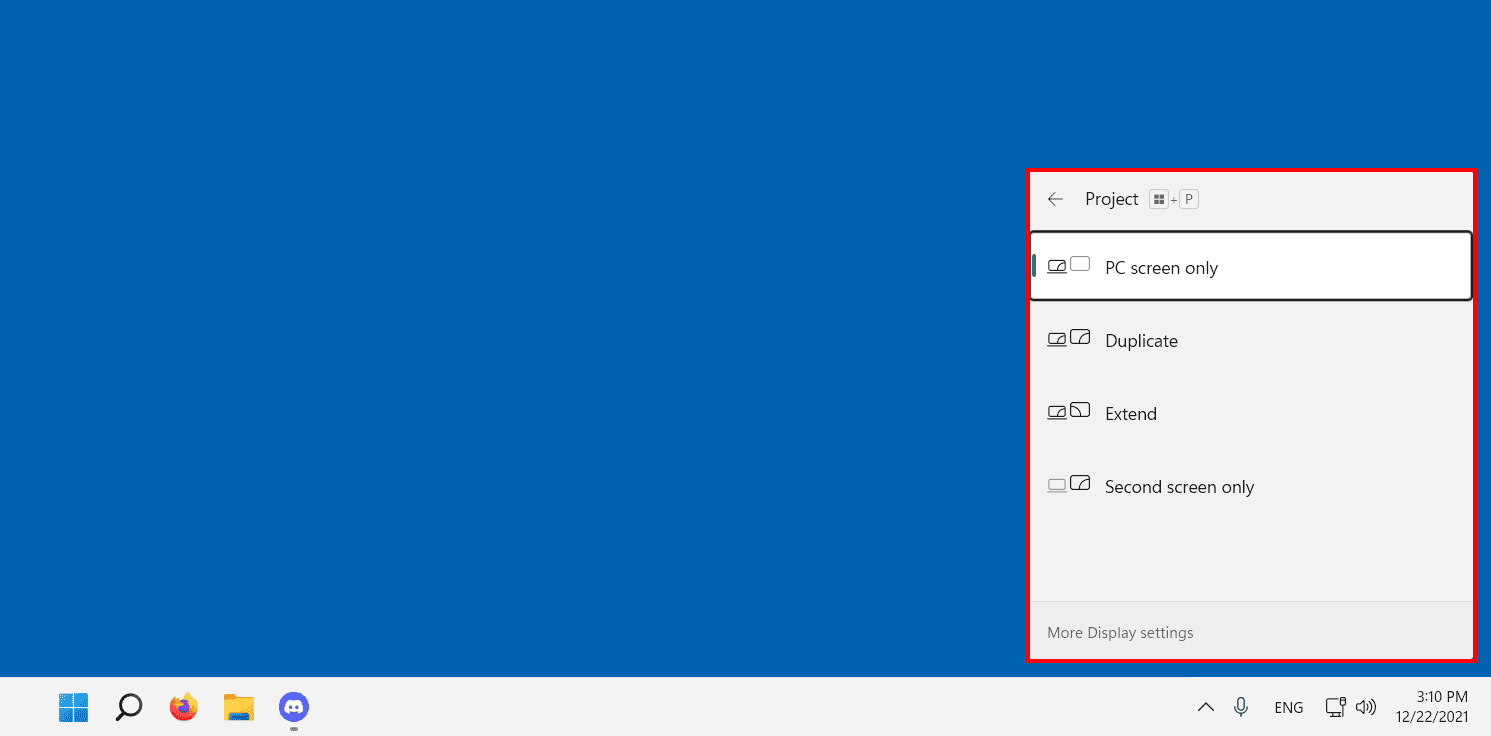
Check if you are connected to wireless displays. Make sure that you just didn’t forget to disconnect from a wireless display with your main device set to the “Second screen only” option.
Restart computer. Sometimes, a cold reboot can help with the black screen situation. Just press your device’s power button for 10 seconds to initiate the system shutdown, then turn it on again by pressing the button.
Software-related fixes
If you have already checked every computer hardware and the black screen issue continues, consider troubleshooting some sections of your system. If your desktop is accessible and you can use your mouse, perform the following suggestions below.
Since the Windows 11 black screen issues are generally caused by driver issues, you can try loading the barebones Windows to load your computer without the influence of third-party software and drivers.
Windows offers a built-in solution for repairing such issues called Windows Recovery Environment.

If you can’t completely enter the Windows 11 system, you may use Windows Safe Mode. It is accessible via the Windows Recovery Environment (WinRE), where you can also perform other troubleshooting steps.
To do this, start your device and press the power button the moment the Windows logo appears. Do this twice, and the system will let you access WinRE.
If the black screen issue occurs before your computer shows the logo, or you cannot boot into the Recovery Environment for some reason, you can try creating a repair disk.
4DDiG Windows Boot Genius allows you to create a bootable repair disk and boot computers that will not start at all.
You will need a working computer with Windows to create this repair disk. Here are the steps:
- Insert a blank USB drive or CD/DVD disk into your working computer.
- Launch 4DDiG Windows Boot Genius and go to Windows Rescue.
- In the left pane, you will find 5 Black Screen of Death scenarios on Windows.
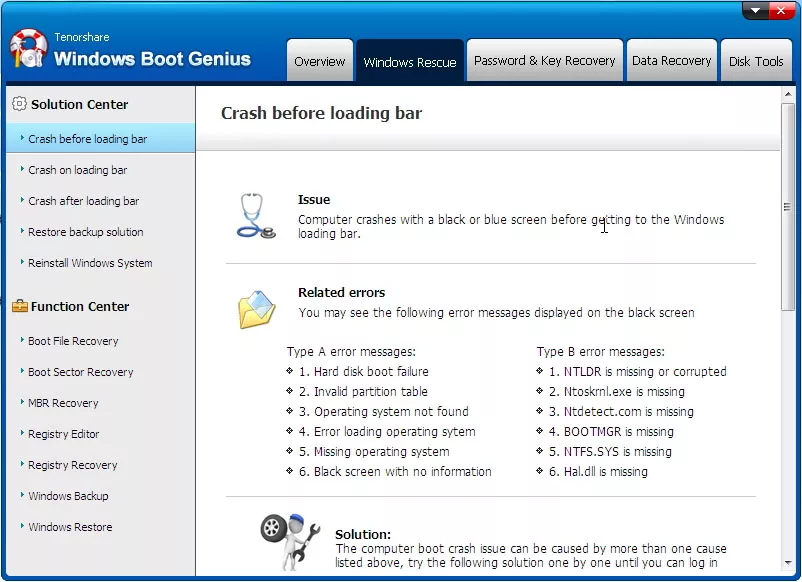
- Select the one matching your situation and follow the on-screen steps.
- Burn your recovery media on the disk or USB drive, and insert it into your damaged PC.
- Boot from the recovery disk and follow the on-screen instructions to recover the disk.
It also helps you recover data from unbootable hard disks and automatically repair Blue and Black Screen errors.
But, if you can access the recovery environment, here are the steps you need to follow.
Go to “Advanced Options, then to” Startup Settings.” There will be three options for Safe Mode, but choose the one that reads “Enable Safe Mode with Networking.”
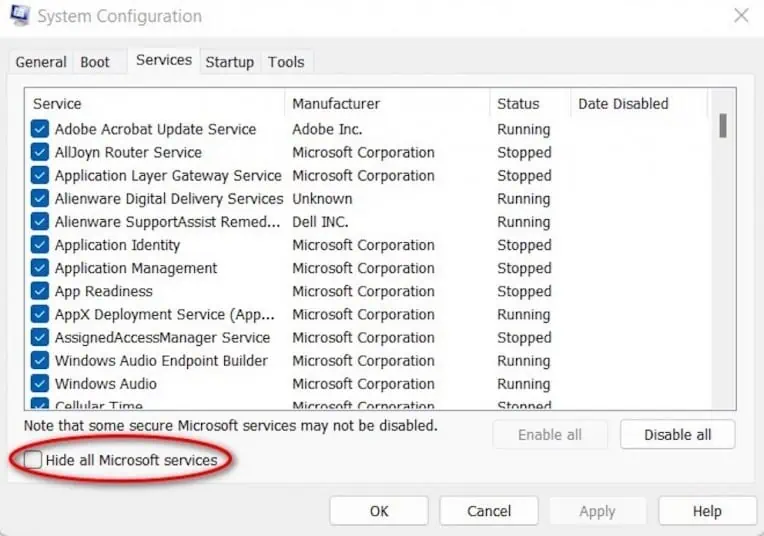
Clean boot. A clean boot will allow you to launch your system with a minimal set of drivers and startup programs. This way, you will be able to determine whether the black screen is occurring due to the other additional background program, services, drivers, or apps. To do this, do the following steps:
- Launch your computer’s System Configuration app by typing msconfig in the Search bar.
- Go to the Services tab and check the “Hide all Microsoft services” option at the bottom.
- Click the “Disable all” and “Apply” buttons.
- Go to the Startup tab and click the “Open Task Manager” link to launch the Task Manager.
- Go to the Startup tab of the Task Manager.
- Select the enabled applications and click the “Disable” button for each.
- Close the Task Manager and click the “OK” button.
- Restart your computer.
- If this stops the black screen from happening, it means one of the background programs you disabled is the cause of the issue. With this, you need to re-enable them individually and restart your computer repeatedly to determine which is causing the black screen. On the other hand, if the black screen continues, restore the changes you made.
Windows Explorer. Your Windows Explorer might be one of the reasons causing this. You can restart it by launching the Task Manager (Ctrl + Shift + Esc), going to the Processes tab, selecting Windows Explorer, and clicking Restart.
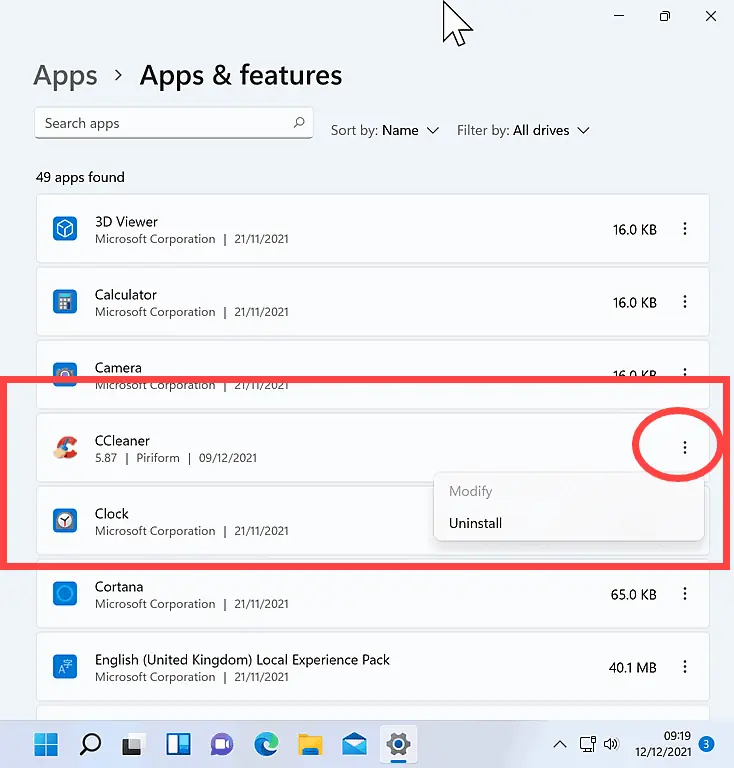
Update or remove applications. If you are experiencing a black screen on certain apps, check if they are updated in the latest possible version. If you are still encountering the black screen only on a particular app after an update, you might need to remove it. Security apps like third-party antivirus apps often cause system problems, so you might consider temporarily removing them.
- Go to Settings > Apps > Apps & Features
- Select the app and click “Uninstall.” Follow the next necessary steps and directions to remove the app completely.
- Restart your device.
Also, if you have the Chromium-based web browser “Wave Browser,” which is reportedly a Potentially Unwanted Program, try uninstalling it. According to different analyses, it has a low compliance rating and is “malicious.” Uninstalling it, however, is not so easy as it makes changes to the configuration files of the web browser and networking settings, so you need to revert the settings. Also, the files the program left on your computer system must be wiped clean. We listed a step-by-step guide here on how to perform these things.
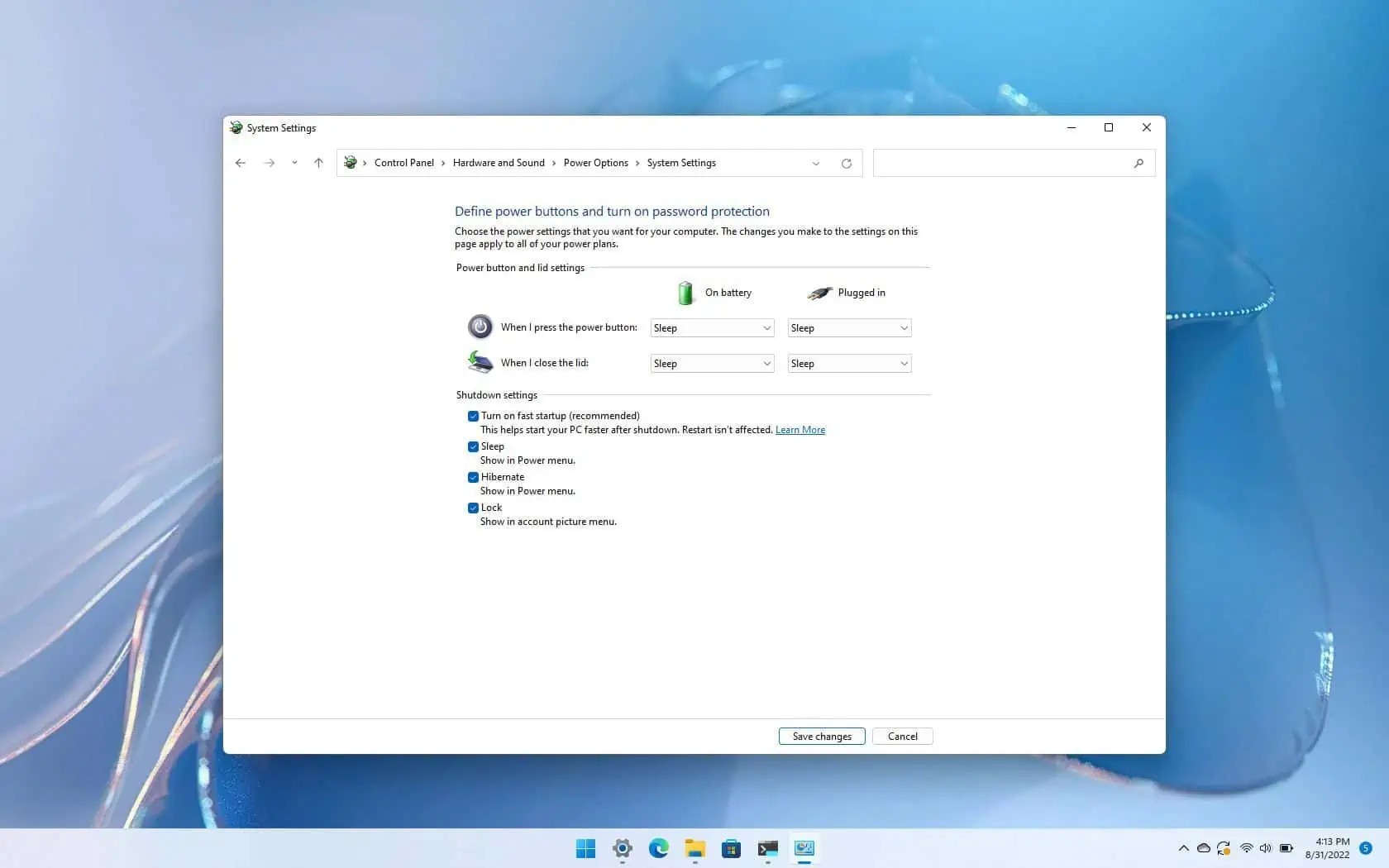
Deactivate Windows 11 fast startup option. Despite the convenience it brings, this feature can also cause a black screen some of the time. With this, you might need to consider deactivating it to see if the black screen situation will stop.
- Access your system’s Control Panel by typing it into your computer’s Search bar.
- Go to the Hardware and Sound section of the Control Panel.
- Select the Power Options and click “Choose what the power buttons do,” located on the window’s left.
- Click “Change settings that are currently unavailable.”
- Uncheck the “turn on fast startup” from the list of items under Shutdown settings.
- Click “Save changes” and restart your device. If the black screen continues, restore the changes.
Fix driver issues. Graphics card drivers are sometimes one of the reasons some computers misbehave, especially after a problematic update. With this, if you suspect your driver is the main cause of your Windows 11 PC’s black screen, you can choose to update it, uninstall updates, reinstall the driver, or more. Here are the steps you can take.

Reinstallation
- Launch the Device Manager of your system by searching for it on the Start.
- Click the Device Manager app from the result and look for the Display Adapters. Click it to expand and view the video adapter.
- Right-click the video adapter and select the “Uninstall device” option.
- Click OK to confirm and restart your computer. The system will reinstall the graphics driver automatically for you.
Roll back the update (if available)
- Look for your video card from the Device Manager by expanding the Display Adapters.
- Right-click the video card and select Properties.
- Go to the Driver tab.
- Select the “Roll Back Driver” and select the appropriate reason from the list that will be presented.
- Click Yes to confirm and restart the PC.
Uninstall problematic updates. Aside from the update in your driver, a system update can also sometimes cause problems. Microsoft usually informs its customers about this, but if you are sure the black screen started after a particular update, you can uninstall them. You can do it by going to Start > Settings > Windows Update > Update history > Uninstall updates. There, you’ll be presented with a list of updates. Find the update you want to uninstall, then select the “Uninstall” button.
System Restore. This is a useful tool to easily return a system to a working condition without having to reinstall the operating system, especially when an install failure or data corruption happens. In the simplest term, it repairs the Windows environment by reverting back to the files and settings that were saved in the restore point, which is created by the utility tool when the system installs software, updates hardware drivers, and installs new hardware drivers. Manual creation of restore points is also possible.
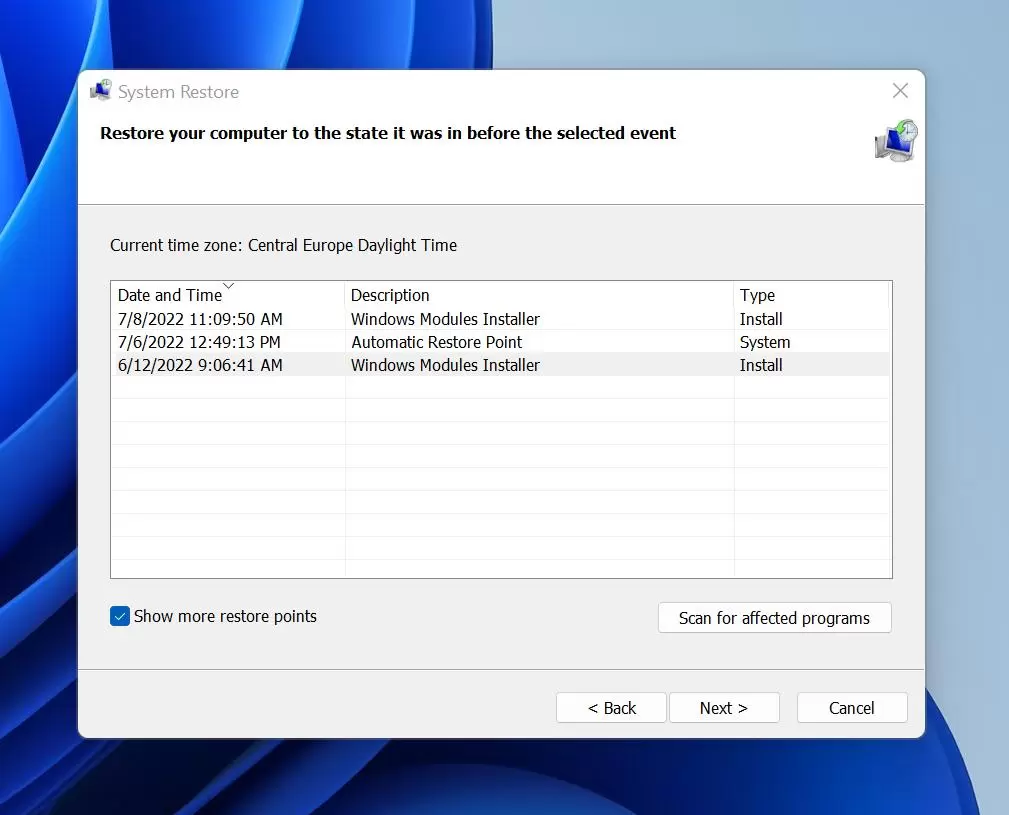
Through these restore points, you can undo these changes (it won’t affect your personal files, but it will remove apps, drivers, and updates installed after the restore point was made) that might be causing the black screen issue in your Windows 11. Note, however, that restore points will only be available if your system protection is enabled (Control Panel > Recovery > Configure System Restore > Configure). If the “Turn on system protection” option is selected, you should have a list of restore points you can use.
Here is how you can access these restore points.
- Launch Control Panel.
- In the Control Panel search box, type “Recovery.”
- Select Recovery and go to Open System Restore.
- Select “Next” in the Restore system files and settings box.
- From the list of results, select the specific restore point that you need. You can also click the “Show more restore points” check box for more restore point options.
- Once you have found the restore point, select “Scan for affected programs,” which will show you the list of items that will be deleted if you use that particular restore point.
- Select Close > Next > Finish.
From WinRE, go to Advanced options > Troubleshoot > Advanced options > System Restore. From that point, click Next and select the most recent restore point. There is also an option for “Scan for affected programs” there. Once decided, select Close > Next > Finish.
Rolling back to the previous Windows version. Windows 11 is being offered now by Microsoft as an upgrade to eligible devices that can meet the system’s minimum requirements. During the initial rollout of Windows 11 and the offering of the Windows 11 22H2 update, the company imposed some safeguard holds after some users reported experiencing issues when they upgraded or installed the update. In the future, if you upgrade to a new Windows version and immediately encounter a black screen, you need to roll back the update.
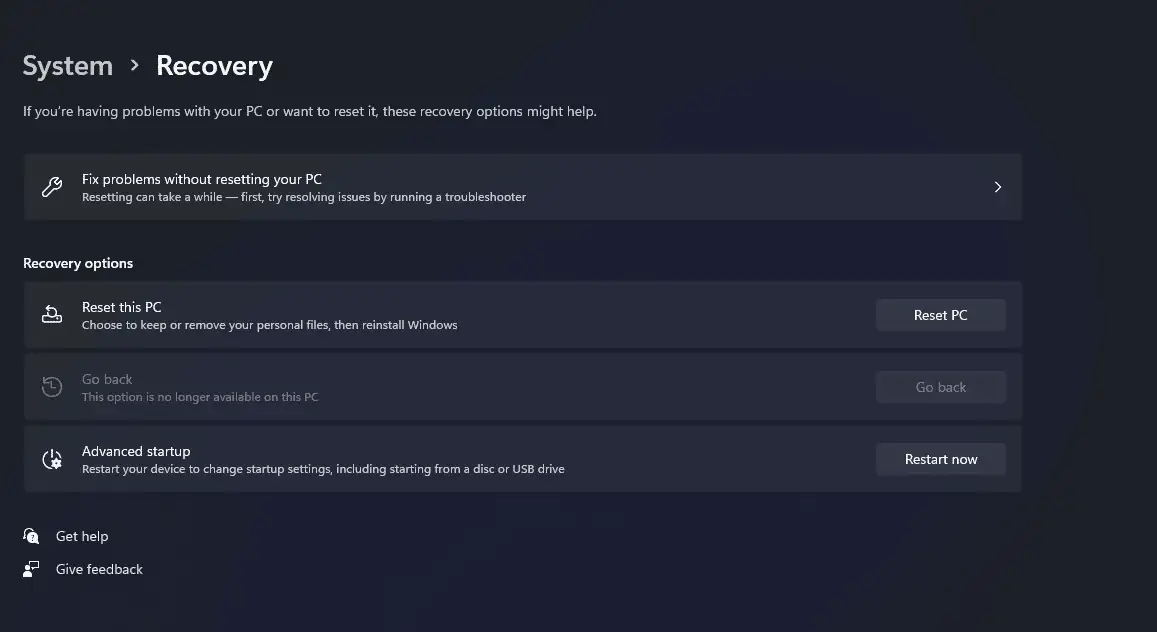
However, it is important to note that you can only go back to your previous version of Windows for a limited time (at least 10 days) after upgrading. To do this, go to Start > Settings > System > Recovery. Next to Go back, select Go back. When you do this, the apps and drivers installed after the upgrade and the changes you made to settings will be removed, but your personal files will be kept.
In WinRE, you can do this by going to Advanced options > Troubleshoot > Advanced options > Uninstall Updates. There, select “Uninstall latest feature update.” You will be asked for your account credentials to continue. Provide the details and select “Uninstall feature update” to confirm the action.
Factory reset. For extreme conditions, you can give your Windows 11 device a factory reset, which will let you do a clean reinstallation and update of Windows. Nevertheless, it will keep your personal data and most Windows settings. According to Microsoft, in some cases, “a clean installation may improve your device’s performance, security, browsing experience, and battery life.” To do this, do the following.
- Go to Start > Settings > System > Recovery.
- Select the “Reset PC” option next to Reset this PC.
- Select the “Keep my files” and “Local reinstall” options.
- If you see a “Restore preinstalled apps?” option, set it to “No.”
- Click “Next,” then “Reset.”
In WinRE, you can do this by going to Advanced options > Troubleshoot > Reset this PC > Keep my files > Local reinstall > Reset.
What’s next?
Resolving the black screen issue in Windows 11 should be easy, depending on the main root of the problem. The sections above give you an abundance of fixes to try. However, make sure to first resort to simple remedies (e.g., checking for faulty hardware components or cables) before attempting more complex options, like making system changes that you might need to revert to later. Ultimately, you can factory reset your device, but this could be a drastic move. With this, you might want first to consider consulting a professional technician before having that as a final resort to your black screen problem.
Read our disclosure page to find out how can you help MSPoweruser sustain the editorial team Read more




User forum
0 messages